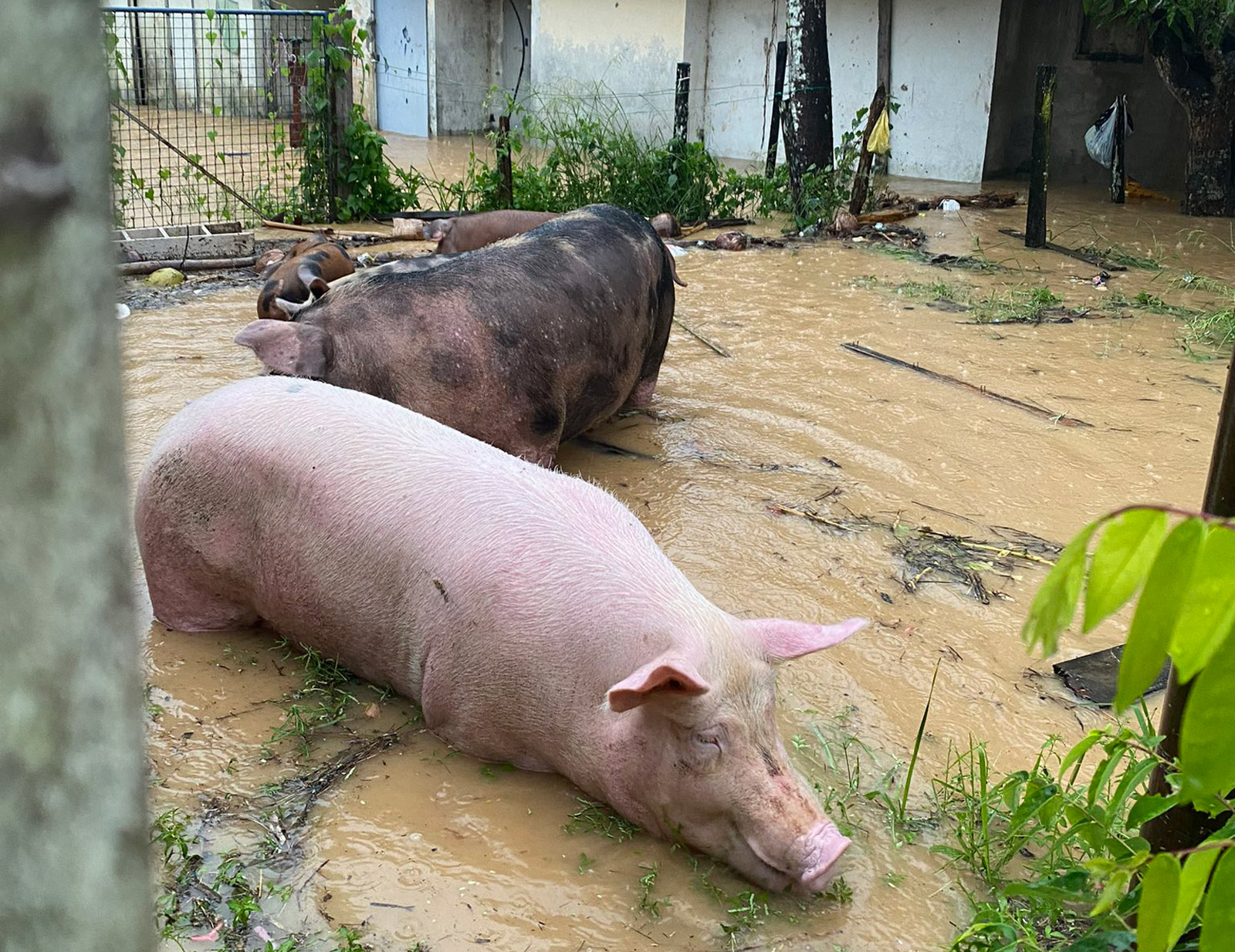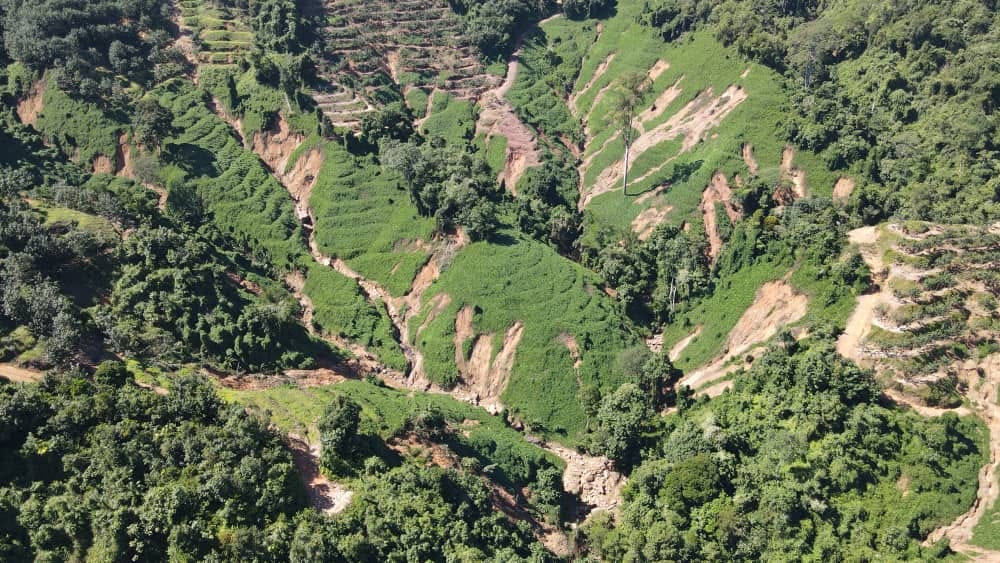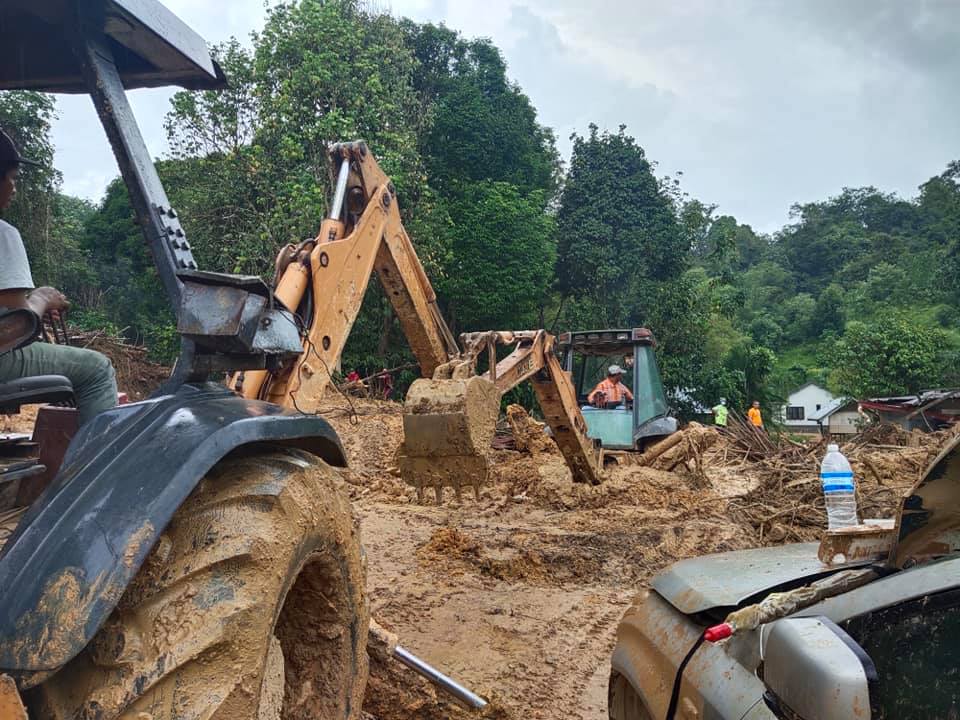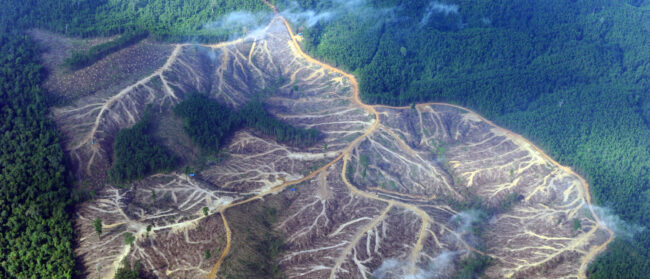When the flood waters started gushing in their home in Sabah, Ema knew she had to act fast.
A domestic helper to a 76 year old with mobility issues, she was racing the clock to save the bare necessities and get both of them to higher ground before the waters went to chest level.
“She was crying when she was trying to save my grandma and whatever she could,” said Annabelle Dianne Lo, recounting the story Ema told her. “She was so afraid that the water would take her away because the current was so rapid.”
As the current slowed, more extensive scenes of damage surfaced. Uprooted trees and overturned cars crashed into homes covered in mud were a common sight.

Four districts in Sabah, the Malaysian state located in the northern portion of Borneo, were left in a sea of destruction in September after unusually heavy rain led to the region’s worst case of mud floods in decades, which have disrupted the lives of thousands.
While weather conditions play a role in major floods, warnings have been issued for years about the impacts of poorly regulated hillside cutting to make way for various cash crops and development projects like the Pan-Borneo Highway. Residents and natural disaster experts point to major soil movement from development as a contributing factor aggravating the severity of floods on Sabah’s west coast.
Development is needed to boost the economy of East Malaysia, but careless development comes with a heavy price. Problems associated with flooding after a downpour are not news for Sabah residents, but the effects of heavy rainfall have become more evident in the past month. It doesn’t take much for flooding to occur now.
“We didn’t know that my grandma’s place would be that badly affected,” Dianne said of the home in Kampung Sugud in the Penampang district, one of the villages worst hit by the floods. “Flooding at her place was pretty much normal. Usually, they can manage it themselves, but not this time.”
Dianne and her cousins spent more than a week cleaning off the thick sheets of mud covering every crevice inside her grandmother’s home.
“There’s mud literally everywhere. Every corner of the room, the floors, even outside the house on the driveway, the drain, the plants. Just everywhere,” she said. “It’s not thin layers of mud, it took us a while to clean up.”
Sabah was hit on 15 September with what residents, politicians and academics alike described as the worst flood in decades. Unlike the rising water normally associated with flooding, this was a mud flood caused by soil erosion.
Bung Moktar Radin, Sabah’s deputy chief minister, admitted “construction or development” could be one of the causes of the flood: “I cannot deny that the Pan-Borneo [Highway] may be a contributor to the floods by clogging up our drainages.”
Similarly, Dr Felix Tongkul of the Natural Disaster Research Centre explained excess material from hill cutting in a higher northern part of the region called Togudon had created mudslides and carried coarse sand downstream to the bottom of the river in Penampang, making the river too shallow during rainy days.
Many locals agree. “Somebody sold the land, then developers that bought the land just started cutting the hill without really caring about what will happen to us living below the hills,” Adrian Banie Lasimbang, a former Sabah state senator, said he was told by a resident whose house was severely damaged.
Much of the Penampang district is located in lowland, surrounded by hills and mountains. Aside from largely unchecked hillside cuttings for cash crops like rubber and durian, massive construction projects including the Pan-Borneo Highway are bound to disrupt the natural water catchment areas like the Moyog River of Penampang, Lasimbang said.
Also known as Asian Highway Route AH150, the Pan-Borneo Highway was started in 1963 to boost the social and economic growth of two East Malaysian states, Sabah and Sarawak. The highway stretching 5,324 kilometres (3,308 miles) connects the two states with Brunei and Indonesia’s Kalimantan region.
“The movement of soil to develop the Pan-Borneo Highway is really putting a lot of sediments in the river, especially the Moyog River. Because of that, the depth of Moyog River has been dramatically reduced. So the amount of water that they can channel to the sea has been reduced significantly,” Lasimbang said.

Barely recovered from the September flood, the Penampang district found itself chest-deep in waters again on 12 October after a ferocious downpour lasting up to six hours, the area’s sixth flood in 2021.
Flooding is only expected to worsen as the region experiences the monsoon transition, a phase in November and December when heavier rainfall and storms are expected, according to the Malaysia Meteorological Department.
For village residents deep within Penampang, receiving aid isn’t that easy, as roads are blocked by fallen logs and debris. Lasimbang has gathered volunteers he calls the “Penampang Broom Army,” who are all equipped with brooms to sweep away water. But he found these troops didn’t suffice as the natural disasters worsened.
“Our broom army cannot do much because we can’t move the debris using just brooms, we have to utilise heavy machinery like excavators and lorries to remove the tree stumps,” he said. “It’s very difficult to enter. Majority of the road access is cut due to the landslide and most of the roads are washed away or blocked by huge debris. Some houses are really too remote to reach, so it’s very difficult.”
For Lasimbang, these erratic weather patterns are telltale signs of the climate crisis.
Lasimbang has gathered volunteers he calls the “Penampang Broom Army”
“Even the [people living in the village] can notice over the years how the climate and the environment has really degraded over time,” he said, explaining that many of them are farmers who detect weather patterns while tracking yield decrease over time.
During a flood, it’s not unusual for electricity to be lost when damaged power lines are disconnected as a safety precaution. Clean water is another disrupted necessity.
“Many of these [villages] still rely on water from the streams. So we have to help them restore their water supplies,” Lasimbang said, noting that government-supplied water cannot reach villages tucked deep in the forest.
Kampung Sugud should be declared an emergency area so government assets can be mobilised to help. “Unfortunately, they are still asleep,” Lasimbang said in a tweet.
Disappointment is brewing among communities where the government has provided minimal assistance while failing to fix roads or restore residential water and power supplies. After the devastating September flood, the federal government distributed 18 million Malaysian ringgit ($4 million) in flood relief. Many affected individuals and communities were unhappy with the amount as none of the funds were allocated to flood mitigation.
Sabah has yet to get a grip on the increased risk of disasters. “They have to accept the risk of bad floods. We cannot avoid this disaster, it will happen again,” said professor Rodeano Rosli, director of the Natural Disaster Research Centre. “We know that the monsoon will trigger the high intensity of the rainfall, and that can trigger the landslide and flood occurrences.”
What’s important for Rodeano is the government’s effort to build resilience among citizens. Residents have already developed their own mitigation strategies by constructing barricades against flood waters or moving to higher ground. However, the government needs to implement a better system to monitor the floods, he said.
A petition backed by a former assemblyperson to deepen the Moyog River was posted online. The plan involved dredging huge quantities of sediment to make space for the next flooding event.

Lasimbang spoke to many affected village residents while doing cleanups and detected a mood of hopelessness caused by the unpredictable weather, constant flooding and felled trees.
“Her house used to be very nice because it’s just by the river, very peaceful. Now she’s terrified to live there”
“She’s about 78 years old. She told me throughout her life she’d never seen this kind of flood,” Lasimbang said of one resident. “Her house used to be very nice because it’s just by the river, very peaceful. Now she’s terrified to live there. She told me the weather now is very unpredictable.”
“The amount of debris deposited in and around her house is too much for her,” Lasimbang added. “She said [she] might just abandon the house and find somewhere else to live. But she has no place to go.”
The despair is especially acute amongst those who have seen their homes and cherished belongings washed away, like Dianne’s grandmother.
“You know when you lost everything? That’s how it feels like. Everything,” Dianne said. “You lost your house, every single thing that you have. The floods have been pretty bad, and we cannot afford it.”


